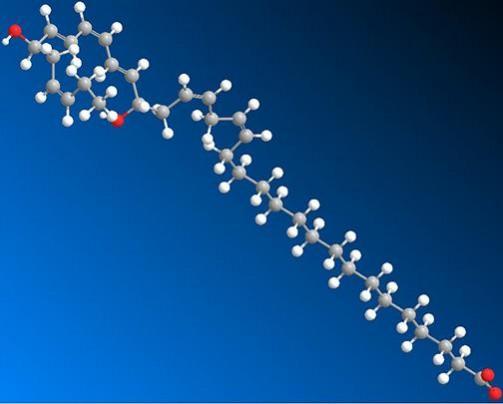The damage that the SARS-CoV-2 coronavirus can inflict upon the human body is crippling, to say the least. Of all the organs that COVID-19 attacks, the lungs serve as the preferred target. This compounds the risks associated with the severity of the viral infection. Offering some good news, a new study has found that bioactive chemical messengers called Elovanoids (ELVs) can prevent the entry of the virus into cells and protect the air sacs (alveoli) in the lungs.
According to researchers from Louisiana State University Health Sciences Center, Elovanoids—which are synthesized from omega-3 very-long-chain polyunsaturated fatty acids (VLC-PUFAs, n-3)—can hinder the RBD (receptor-binding domain) of the SARS-CoV-2's spike and downregulate ACE2 (angiotensin-converting enzyme 2) receptors that the virus binds with. The study was published in the journal Scientific Reports.
"Because the compounds are protective against damage in the brain and retina of the eye and the COVID-19 virus clearly damages the lung, the experiment tested if the compounds would also protect the lung," said Dr. Nicolas Bazan, senior author of the study, in a statement.
Pitting A Messenger Against A Killer

ELVs are cell-specific lipid mediators that are secreted in response to cellular injuries or when cells are faced with distress that threaten their survival. They were discovered by Dr. Bazan and his team in 2017. The finding of ELVs during his research provided the very first evidence of their existence and the major role they play in protecting and maintaining photoreceptor cell and retinal pigment epithelial (RPE) survival.
It is well-established that SARS-CoV-2 coronavirus uses its 'spike' or 'S-protein'—the hook-like structure found on the surface of the virus—to invade cells. The spike binds with ACE2 receptors (proteins found on the surface of different cell types) to gain entry into cells and eventually infect them.
Through the current study, the authors aimed to test whether ELVs could block the entry of the virus led by its 'spike', particularly its RBD region, that is instrumental in its infecting mechanism. They wanted to ascertain whether the bioactive chemical messengers could trigger a protective response against COVID-19 by impeding this process.
From Humble Messengers to Soldiers

For the study, the researchers tested the efficacy of ELVs in human alveolar primary cell cultures. Infected lung cells were treated with ELVs and the binding of the spike was observed. It was found that along with reducing the capacity of the coronavirus's spike in binding to ACE2 receptors and entering cells, ELVs also promoted the production of a set of protective and anti-inflammatory proteins in order to counter the damage caused to the lung cells.
The authors also observed that ELVs reduced the production of the crucial ACE2 receptors. This is important as ACE2 receptors serve as 'locks' on cells that are opened by the key-like spike to enter the cells and multiply. Also, the study is the first to demonstrate that alveolar cells possess pathways that enable the biosynthesis of ELVs. The findings of the study can help in devising interventional measures not only for COVID-19 but also for other respiratory illnesses.
"Since SARS-CoV-2 affects nasal mucosa, the GI tract, the eye, and the nervous system, uncovering the protective potential of ELVs expands the scope of our observations beyond the lung. Our results provide a foundation for interventions to modify disease risk, progression, and protection of the lung from COVID-19 or other pathologies (including some types of pneumonia)," expressed Dr. Bazan.

















